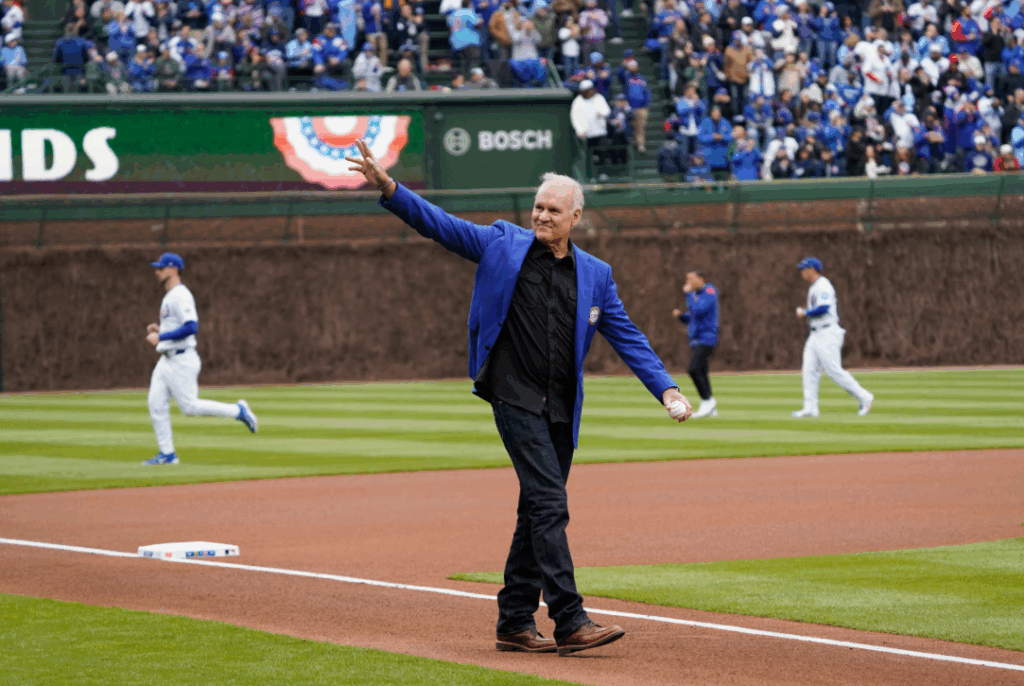Ryne Sandberg is a name that pops up when you think of baseball greatness in the 1980s and 90s. Maybe you’ve seen highlights of his defensive skills at second base or his clutch hitting performances that lit up Wrigley Field. Beyond those statistics and accolades lies a story of a Philadelphia Phillies castaway becoming a Chicago Cubs legend.
His story shows how talent, determination, and professionalism can make a Hall of Fame career a lasting baseball legacy.
Early Years and Entry Into Major League Baseball
Though his name would become synonymous with Chicago Cubs baseball, Ryne Sandberg’s professional journey began elsewhere. You might be surprised to learn that the future Hall of Fame second baseman was actually drafted by the Philadelphia Phillies in 1978, not the Cubs.
The Phillies traded Sandberg to Chicago in 1982 in what’s now considered one of baseball’s most lopsided deals. This transaction fundamentally altered the trajectory of his career and the Cubs’ future. Initially a shortstop, Sandberg shifted to second base, where he’d build his legendary legacy.
This position change proved pivotal, allowing him to develop the defensive prowess that would become his trademark. The Cubs recognized his potential immediately, setting the stage for a remarkable 15-year run at Wrigley Field.

Rise to Stardom with the Chicago Cubs
Though some players need years to get comfortable, Ryne Sandberg quickly made his mark on Chicago’s North Side. He became an MVP winner in 1984 and a full-blown baseball superstar. That year, he hit .314 with 19 home runs and 84 RBIs, leading the Cubs to their first postseason appearance since 1945.
You could spot Sandberg easily. He was humble, focused, and quietly commanding the game at Wrigley Field. Fandom loved him for more than numbers. They loved him for how he steadily and brilliantly played.
Sandberg was dependable and excelled, whether making a seemingly impossible double play or hitting a clutch hit. He carried a determination that Chicago fans hold in high regard.

Fielding Mastery and Gold Glove Dominance
At second base, Ryne Sandberg established unmatched range and technical skill. You couldn’t miss the way he glided effortlessly to snag grounders and turned impossible double plays with lightning-quick transfers.
Sandberg’s consistency became his hallmark, winning nine consecutive Gold Glove Awards from 1983 to 1991. As a Cubs player, he maintained a .989 fielding percentage and committed only 123 errors in 16,155 chances throughout his career.
He set himself up perfectly before each pitch, studying hitter tendencies meticulously, and mastering the fundamentals that many players never considered. It is a defensive standard that second basemen still try to match today.
Offensive Power and Historic Moments
Ryne Sandberg’s offensive capabilities often stood in the shadow of his defensive prowess, yet his bat was equally instrumental to his Hall of Fame career. He makes his offensive power most apparent when he can repeatedly drive the ball with surprisingly much force from his small frame.
He hit 282 career home runs, which was impressive for a middle infielder of his time. He made key contributions for the Cubs, which was none more memorable than the “Sandberg Game” on June 23, 1984. In that game, he brought in runs during both the 9th and 10th innings off Cardinals pitcher Bruce Sutter.
Sandberg also made numerous manufacturing runs, leading the league in that category in 1989. He created moments that Cubs fans still celebrate decades later.
Retirement, Hall of Fame Induction, and Legacy
Sandberg retired unexpectedly in 1994 before returning to the Cubs in 1996 for one final two-season stint. The second act never matched his prime years, but it was an appropriate end to an extraordinary career.
Inducted into the 2005 Hall of Fame, 76.2% of voters recognized Sandberg as a great player in baseball. His Cooperstown speech reflected the dignity of his playing days.
Sandberg’s legacy goes beyond statistics. He changed second base defense and showed many young infielders that consistency and professionalism could make a franchise as much as highlight-reel plays.

Life After Baseball and Continued Cubs Connection
When Sandberg finally hung up his cleats for good, his connection to baseball, particularly to the Cubs organization, only deepened. The Baseball Hall of Fame inductee returned to the team in 2007 as a spring training instructor, gradually expanding his role within the organization he loved.
You’ll remember his four-year journey through the Cubs’ minor league system as a manager, culminating in his brief stint managing the Philadelphia Phillies from 2013-2015. Despite the challenges in Philadelphia, his Cubs legacy remained untarnished.
Today, Sandberg continues to represent the organization at fan conventions, charity events, and ceremonial occasions at Wrigley Field. His coaching contributions have shaped the defensive mindset of many young infielders.
Frequently Asked Questions
What Training Regimen Did Sandberg Follow During His Career?
You’ll find Sandberg followed a disciplined training regimen that emphasized consistent fielding practice, weight training for power hitting, and cardiovascular conditioning that helped maintain his durability throughout his 16-year MLB career.
How Did Sandberg’s Playing Style Compare to Modern Second Basemen?
You’ll notice Sandberg’s exceptional defense and power hitting set him apart from today’s second basemen. He combined traditional fundamentals with surprising pop, while modern players often prioritize launch angle and specialized roles.
What Was Sandberg’s Relationship With Cubs Managers Throughout His Career?
You’ll find Sandberg respected his managers, especially Don Zimmer, while maintaining professional relationships with Jim Frey and Dallas Green. He wasn’t outspoken but communicated effectively and earned trust through his consistent performance.
Did Sandberg Have Any Significant Rivalries With Other Players?
You won’t find many player rivalries in Sandberg’s career. His competitive nature targeted excellence rather than individuals. He maintained professional relationships with peers and focused on his performance instead of conflicts.
What Personal Challenges Did Sandberg Overcome During His Baseball Journey?
YSandberg overcame difficult career decisions, including his surprise retirement and comeback. He also battled through slumps, adapted to position changes, and managed the pressure of being Chicago’s baseball icon.





